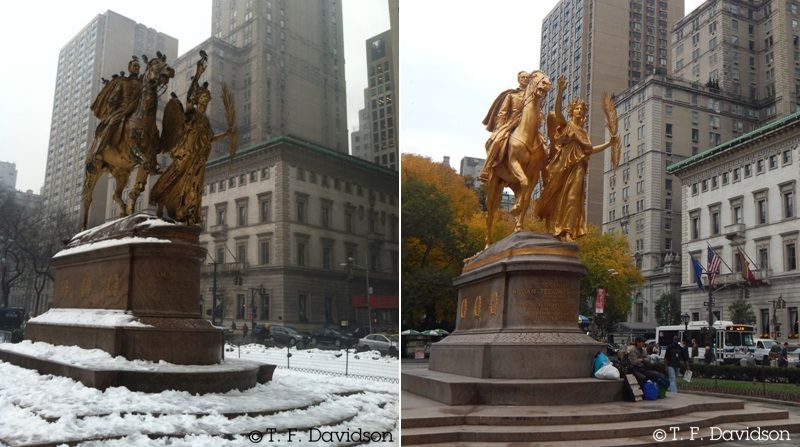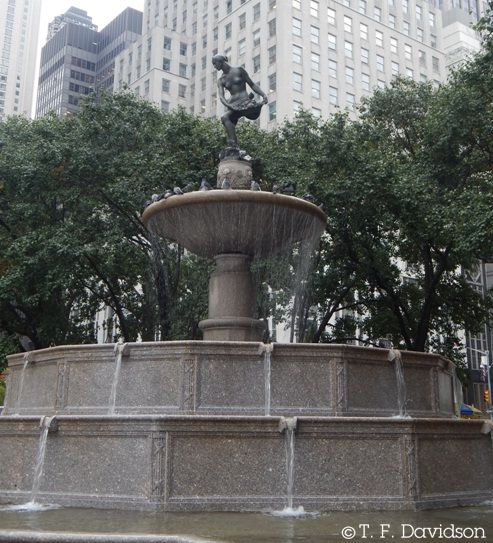100th Anniversary Great Nave Tour at the Cathedral of St. John the Divine
Celebrate the 1925 construction of the stunning nave inside the world's largest Gothic cathedral!


General William Tecumseh Sherman, his steed, and guiding angel recently underwent a long-awaited and much-needed make over in Central Park’s Grand Army Plaza. Sherman received a fresh new gilding of 23.75 karat gold leaf, restoring it to its former glory for the enjoyment of park goers and New York City sidewalk travelers. The statue stands on the northern half of the plaza, gracefully and confidently striding towards the southern half consisting of the Pulitzer Fountain and the entrance of the Plaza Hotel.

Sherman Statue at Grand Army Plaza, before and after restoration
After the gold leaf was meticulously laid and pressed, it received a minor tint in tone so that the General wouldn’t come across as too bright and too yellow. Following the tint the sculpture was coated and sealed with multiple layers of polyurethane which acted as a sunblock and bug repellant against the New York summer sun and perpetual structure dwelling pigeons. In fact, the anti-pigeon tactics are in full force–if you look closely there are little spikes coming out of the top of Sherman’s head, the wing of the angel, and other key parts of the sculpture.
According to The New York Times, this work is part of a larger restoration of the whole Grand Army Plaza in which The Central Park Conservancy plans to also restore the gorgeous Pulitzer fountain which is celebrating it’s centennial.

The statue itself was cast in bronze by Augustus Saint-Gaudens in Paris starting in 1892, two years before its neighbor, the famed Metropolitan Club was completed by Stanford White. Saint-Gaudens also casted the bronze statue of Diana that once chaperoned the city atop White’s Madison Square Garden. The Sherman statue was dedicated in 1903 and has guarded Central Park with stoic pride since.
It may surprise some that so much attention and care is paid to such a controversial and polarizing historic figure (Sherman has been credited with the mass destruction of Georgia, particularly Atlanta, during his notorious “March to the Sea” in the American Civil War, and was the Commanding General during the Indian Wars). Does it suggest a shift in popular opinion and political mindset since the turn of the last century? Or could Sherman’s presence and the attention visited upon him simply represent a deep respect for public art? After Untapped Cities recently completed its series on Banksy, the questions seem parallel to street art today. Public nuisance? Or monumental expression of art?
Get in touch with the author @newyorkcityhistory.
Subscribe to our newsletter